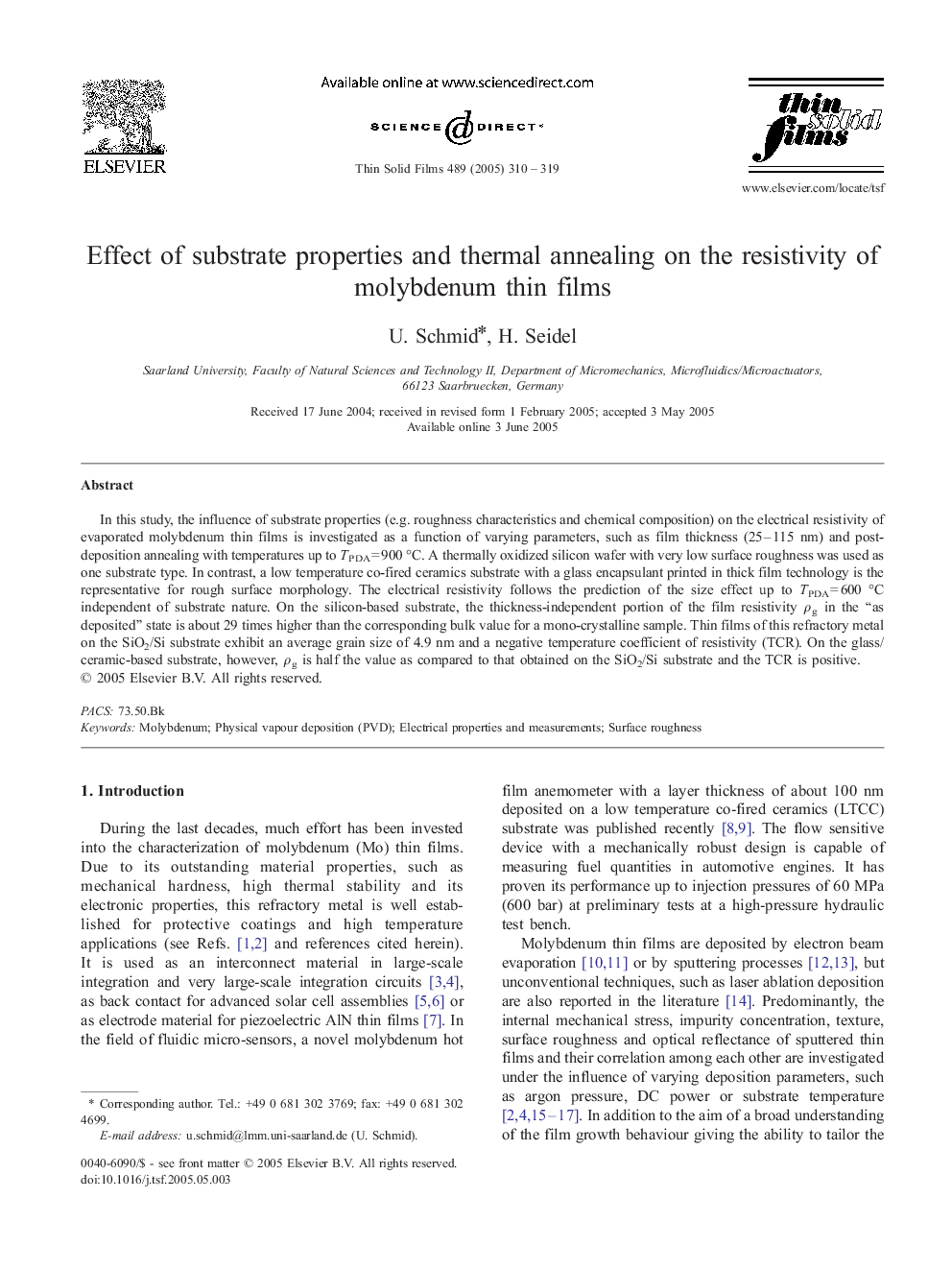| Article ID | Journal | Published Year | Pages | File Type |
|---|---|---|---|---|
| 9812288 | Thin Solid Films | 2005 | 10 Pages |
Abstract
In this study, the influence of substrate properties (e.g. roughness characteristics and chemical composition) on the electrical resistivity of evaporated molybdenum thin films is investigated as a function of varying parameters, such as film thickness (25-115 nm) and post-deposition annealing with temperatures up to TPDA = 900 °C. A thermally oxidized silicon wafer with very low surface roughness was used as one substrate type. In contrast, a low temperature co-fired ceramics substrate with a glass encapsulant printed in thick film technology is the representative for rough surface morphology. The electrical resistivity follows the prediction of the size effect up to TPDA = 600 °C independent of substrate nature. On the silicon-based substrate, the thickness-independent portion of the film resistivity Ïg in the “as deposited” state is about 29 times higher than the corresponding bulk value for a mono-crystalline sample. Thin films of this refractory metal on the SiO2/Si substrate exhibit an average grain size of 4.9 nm and a negative temperature coefficient of resistivity (TCR). On the glass/ceramic-based substrate, however, Ïg is half the value as compared to that obtained on the SiO2/Si substrate and the TCR is positive.
Keywords
Related Topics
Physical Sciences and Engineering
Materials Science
Nanotechnology
Authors
U. Schmid, H. Seidel,
